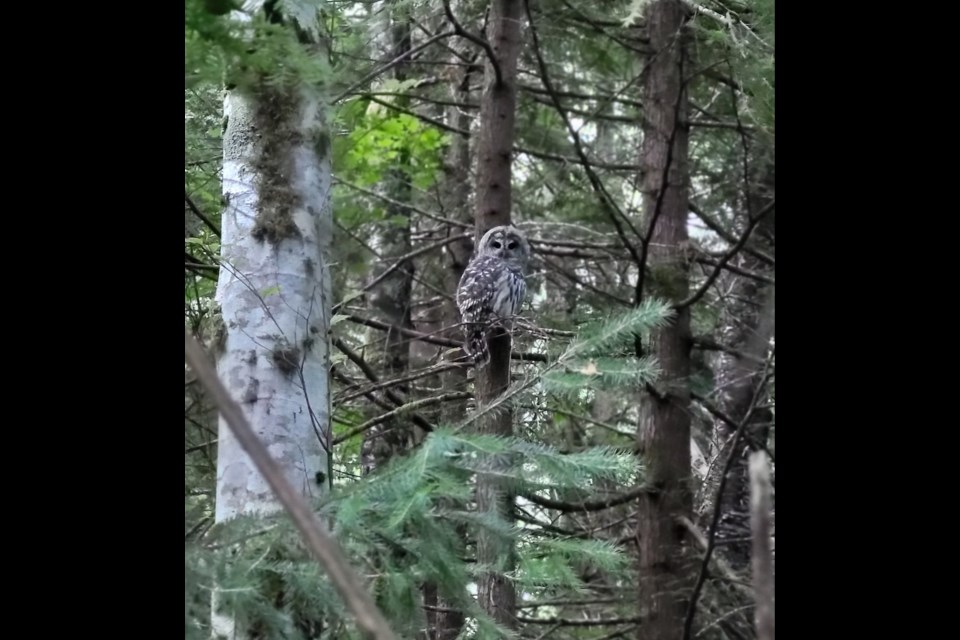Recently, local Travis Cesarone was camping in Squamish when he heard a bit of a ruckus outside his tent.
"A few juvenile Stellar's jays living in the campground squawked more excitedly than usual. I awoke and got up, prepared to shoo them off," he told The Squamish Chief.
"Then I noticed what was causing the fuss. The Stellar's jays were harassing a barred owl perched in a young cedar tree, less than a few dozen metres away," he added.
"It sat beside my tent for a long time this morning. And I saw it again in the afternoon... The owl was watching the squawking Stellar's jays — while waiting for critters in the ferns."
Barred owls (Strix varia) are one of the most common owls encountered in Squamish, and are well-known for their “who cooks for you?” call, Vanessa Isnardy, program manager with WildSafeBC told The Squamish Chief.
"While mostly nocturnal, they may be observed in the daytime and may even be spotted hunting," she said.
While they have a keen sense of hearing, they do not have visible 'ears' like their cousin, the great horned owl, she added.
"They strongly resemble the much rarer and threatened northern spotted owl."
Currently, there are only six known wild northern spotted owls left in B.C., according to Isnardy.
Isnardy said that barred owls can be found year-round in Squamish.
"They start courting over the winter and seeking out ideal nesting spots such as a tree cavity, an abandoned nest, or the top of a snag. Barred owls mate for life, and the cackles and calls of the duos at night can be quite unnerving," she said. "In the late spring and summer, they may have one to five owlets. Females are particularly defensive of their nests at this time of year and have been known to silently attack pompoms and ponytails of unsuspecting hikers and joggers."
More owly facts
• Barred owls are fairly new to B.C. and likely arrived in the early 1900s, with the first official record from the Liard River in 1943, according to BC Breeding Bird Atlas. Isnardy noted that barred owls do not migrate, but as trees grew, young owls were able to take advantage of new habitats and their populations were able to increase. Eventually, this led to more owls in the Pacific Northwest, and they competed directly with the already struggling northern spotted owls. They have also been known to hybridize (crossbreed).
• Barred owls also prey on western screech owls that are also declining in numbers.
• Like most owls, barred owls will eat a variety of small mammals, reptiles, amphibians and other birds. Some birds, recognizing them as predators, may band together and mob them, according to allaboutbirds.org.
Advice
Isnardy said if you encounter a barred owl, "enjoy the experience but do not overstay your welcome or try to approach them, especially during nesting season."
"If you see a young fledgling on the ground, keep your pets away and give it a chance. Young owls are able to climb back up trees using their bill and talons," she said.
"Remember, any poisons used to kill rodents may also affect their predators, so become informed regarding the different options."



